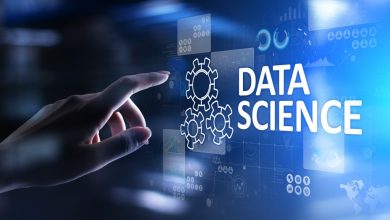
Ten to fifteen years – the average lead time for a new drug to go from initial discovery to regulatory approval. $2.23 billion – what big pharma spent on average to develop a drug in 2024. Only five out of 10,000 – the number of new drug candidates under testing which finally qualify for clinical trial. One in ten – the number of drugs at the design stage that progress to clinical trial and receive FDA approval. Few industries have more operational complexity than pharmaceuticals and life sciences.
Coming to the situation in the United States, an aging population and rising rate of chronic illness – diabetes, heart disease, respiratory conditions and others – are significantly increasing the demand for healthcare, which is already stretched to the breaking point. To quote just a couple of figures, the country is expected to face a shortage of about 100,000 critical healthcare workers by 2028. According to the American Hospital Association, the healthcare industry could be short of up to 124,000 physicians by 2033. It is estimated that 200,000 nurses need to be hired every year to keep up with demand.
Against the background of these crushing challenges, artificial intelligence technology is standing out as a singular force that could transform every aspect of healthcare, be it diagnosis, drug discovery, treatment or disease prevention.
Enabling the Drug Development Lifecycle
It is estimated that a Phase III drug trial alone generates about 3.6 million data points. Handling huge data volumes at every step of drug development takes serious resources. But advances in digital technology are paving the way forward for pharmaceutical companies, which are leveraging AI, machine learning and advanced analytics to analyze enormous datasets in real-time to reduce drug development cost and lead time. It has been found that AI can minimize the time to screen new drugs by 40 to 50 percent, resulting in significant cost savings.
During the discovery stage, pharma companies are driving simulations to rapidly identify likely drug candidates, and study molecular structures, genomic & proteomic information and clinical trial data to predict drug-target interactions. Drug researchers are using AI’s real-time insights from clinical trials to make important decisions, such as how best to adapt protocols. As the critical window of opportunity for capturing a new drug’s value shrinks, it has come down to 9.8 years from 11.7 in the last twenty years, AI is helping pharmaceutical companies counter this problem by accelerating the development, approval and distribution of therapies. Further, AI-optimized manufacturing is expected to reduce pharmaceutical production costs by up to ten percent.
Besides contributing to drug safety and effectiveness by predicting the properties of drug molecules, AI tools are helping to recruit suitable patients and optimize trial design by predicting outcomes and facilitating drug repositioning. They are also assisting drug companies in composing cohorts, monitoring activities, retaining patients and closing trials, thereby improving trial speed, precision and cost efficiency. Last but not least, generative AI is relieving scientists of mundane work, such as extracting and summarizing information from scientific documents and trial data, by automating these tasks. Co-pilots are assisting clinical study teams by offering relevant insights through conversation, automatically drafting communications between cross-functional teams, and issuing intelligent alerts for proactive intervention.
Here is a very short list of AI’s drug development successes:
- Pfizer streamlined COVID-19 vaccine trials and accelerated distribution by using AI to analyze millions of data points in a study involving 44,000 participants.
- Since 2023, Moderna has employed AI extensively in research and manufacturing activities. A tool named Dose ID leverages analytics to assess vaccine dosing and empower clinical decision-making in advanced trials.
- AstraZeneca, in partnership with biological simulation company Turbine, is leveraging the latter’s proprietary platform to identify and understand drug resistance mechanisms in hematological cancers.
AI’s role in U.S. healthcare will only grow as the country’s AI in pharmaceutical market size expands rapidly from $400 million in 2024 to $4,350 million by 2034.
Improve Diagnostic Speed and Accuracy
AI systems based on deep learning, particularly convolutional neural networks, are being used in medical imaging across tasks such as image segmentation, object detection and disease classification. Machine learning models, combined with natural language processing, process medical reports and data to improve diagnostic precision and streamline workflows, especially for radiologists and pathologists. Indeed, the latest AI tools are proving faster and more accurate at diagnosing even complex conditions such as cancer, neurological disorders and cardiovascular disease.
Another advantage of using AI in medical diagnosis is that it lightens the load of America’s overworked healthcare system. AI can also automate a number of other tasks to free up time that doctors and nurses can spend attending to patients. For instance, Natural Language Processing solutions extract critical data from patients’ health records at the point of care and keep clinical documentation up to date. Then there are hospital analytics systems, which analyze patient traffic, hospital capacities and other information to optimize resource allocation and improve patient coverage.
Realizing Personalized Treatment Plans
AI-powered analysis of medical datasets, including health records, lab tests and medical imaging, can help to identify patients at risk of developing different diseases, allowing early detection and timely intervention. In some cases, these insights, along with other data, such as a patient’s health markers, response to earlier treatments, behavior pattern and lifestyle, can be used to create a personalized treatment plan.
One of the largest hospitals in France is using a data-driven medicine platform to produce more accurate diagnoses in hereditary cardiac conditions, which is improving the accessibility and impact of precision medicine at scale.
Generative AI can take personalized medicine further by enabling ongoing customization of treatment and proactive patient support. For instance, it can regularly review a cancer patient’s genetic profile and tweak the treatment based on fresh lab results. Gen AI is also driving other advances, for example, in personalized digital therapeutics. A digital therapeutics product for personalizing diabetes care has helped more than 20,000 patients manage their HbA1c levels better, as well as other critical markers such as weight, sleep and stress.
Predicting Disease Incidence and Other Variables
AI’s predictive capabilities provide early insights into risk of disease, enabling timely remediation. Analysis of population-level data helps to identify at-risk segments, allowing proactive intervention; analysis of individual data pinpoints patients who are more likely to develop complications or require readmission, so they can make timely improvements in lifestyle or medical regimen. Predictive models also support personalized treatment by suggesting the medicine and dosage that is most likely to succeed based on a patient’s health data. Other uses of predictive AI include forecasting hospital resource requirements and metrics, such as bed occupancy, to streamline staffing and resource allocation. Together, medical natural language processing and predictive analytics uncover hidden patterns in reports to produce new insights into diseases and treatments to drive better healthcare. outcomes. Finally, generative AI supports regulatory compliance by predicting the type of questions that health authorities might ask drug manufacturers during clinical development.
A study involving more than 1,000 respondents from the pharmaceutical and life science sectors estimates that by 2030, AI could add $868 billion to the industry globally, $479 billion in North America alone, as companies leverage it to manage trials, enhance diagnostics, support telemedicine, practice precision medicine and more. Another source says that just generative AI could deliver $60 billion to $110 billion worth of annual economic value to the pharmaceutical and medical-product industries by improving drug discovery, development and marketing. The point is that the AI opportunity is unprecedented, transformative and unlike any other that has gone before.
But at the same time, it poses certain risks and challenges that could test the industry – including lack of transparency and explainability in AI models, poor training data quality and availability and a variety of ethical and regulatory concerns. Since they are not only accountable to regulators and consumers, but also face huge liability risk, pharmaceutical and healthcare companies have to be extra vigilant when deploying AI. This calls for robust governance and a responsible AI framework to enforce adherence to regulatory mandates, data protection laws and ethical principles such as avoiding bias in algorithmic outcomes. Once these are in place, the sky is the limit.




